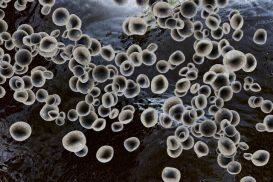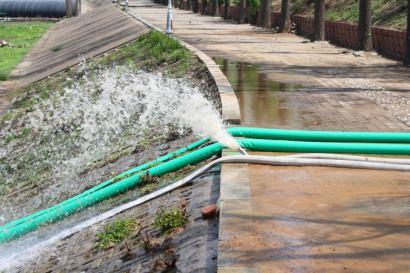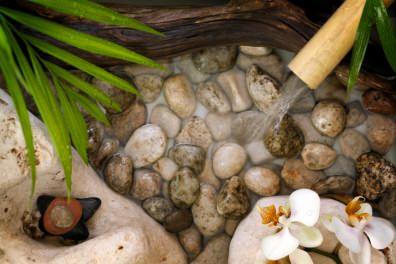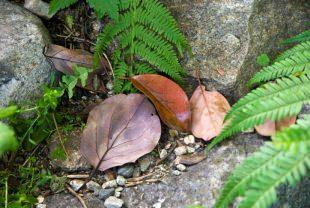Constructed wetland
Post from EditorialsPhytodepuration is a new technology for the treatment of waste waters, this is an innovative system that, through the use of plants, is capable of purifying water.
The constructed wetland is a method based on natural wastewater treatment. This system essentially consists of a basin whose side walls and the bottom are sealed with suitable panels or canopies, this same basin has a surface layer consisting of aquatic plants and it is then filled entirely with gravel material. This gravel material is made of different grain as its main function is to act as a filter, waste water will then be purified.
The process of water purification is done by the combination of a series of chemical actions that are created between the gravel, plant varieties which are implanted and the microorganisms that are to develop within this context. The main role is played by plant organisms, whose main task is to purify the wastewater that is collected within this basin, absorbing the nutrients contained in them. In the roots of these plants there are some microorganisms growing, they absorb the oxygen to survive triggering chemical reactions and therefore reducing the emission of pollutants into the environment. These combined systems have given rise to a real technology of bio-purification, through which plant species can break down, remove or immobilize all those pollutants that commonly these days are present in the soil or water.
In the roots of these plants there are some microorganisms growing, they absorb the oxygen to survive triggering chemical reactions and therefore reducing the emission of pollutants into the environment. These combined systems have given rise to a real technology of bio-purification, through which plant species can break down, remove or immobilize all those pollutants that commonly these days are present in the soil or water.
Reasons to choose the wetland system
Nowadays, the attention to the environment and to the principles of sustainability has become one of the criteria that are placed at the base of a good design. Then it takes advantage of a natural system that aims to treat waste water without requiring the use of external mechanical components which would create a high-energy, is himself these canons.
 Currently the system of disposing of waste water is not placed inside the sewer system, usually it first passes to a septic tank, only to be spilled into the ground or into a watercourse located in the vicinity of the site in question.
Currently the system of disposing of waste water is not placed inside the sewer system, usually it first passes to a septic tank, only to be spilled into the ground or into a watercourse located in the vicinity of the site in question.
This system designed in this way is a significant source of pollution to the environment, partly because nowadays this problem is widespread.
For this reason, choosing to install a wetland system for the disposal of waste water could represent a big step forward for the preservation of our planet.
Also, if you choose to adopt even on a small scale a wetland system it could also give you countless advantages, such as for example, the absence of odors supporting a minimum cost of implementation, management and maintenance, the possibility of reuse of waste exhaust, as well as a long life time, having regard to its simplicity of implementation and maintenance over time.
In fact it is the simplicity of its construction and operation, which is a form of constructed wetlands for wastewater treatment suited to small communities.
How you can make a constructed wetland
 To make a constructed wetland, the first thing to do, after deciding the garden area where to place it, is to run an excavation depth of about 80 cm, the extent of which the surface can be variable depending on the amount of water that must be disposed of, and depending on the rainfall of the site we are considering.
To make a constructed wetland, the first thing to do, after deciding the garden area where to place it, is to run an excavation depth of about 80 cm, the extent of which the surface can be variable depending on the amount of water that must be disposed of, and depending on the rainfall of the site we are considering.
This excavation must then be coated with a layer of waterproof membrane. Within the basin, usually on the bottom, the pipes must then be installed and then you will have to fill this basin with the gravel material. As the last step, but no less important, you have to chose plant species to plant that will be placed appropriately.
The size of the constructed wetlands plants depends on a number of parameters such as the organic load, the hydraulic load surface, the retention time, etc. ... and must be adhered to the values imposed by legislation.
Constructed wetlands with vertical flow
The vertical flow constructed wetland systems are the most advanced version of the horizontal flow constructed wetlands plants, as they adopt an innovative system through the adoption of principles and innovative manufacturing techniques.
The principle that is the basis of the operation of a vertical flow constructed wetland systems is the use of natural purifying capacity of the soil through the bacterial biomass present in it. This is mainly responsible for all the natural degradation processes that take place through a series of chemical oxidation-reduction reactions that arise within the soil, in the presence of pollutants.
 Topsoil implanted, which is always present, if properly maintained, protects from winter temperatures trying to maintain a high purifying efficiency even in the presence of very low external temperatures, which may also wander around -10° C. In this way it becomes possible, even during cold periods, the absorption of minerals in the soil which guarantee the presence of a bacterial microfauna able to degrade and remove contaminants within this system.
Topsoil implanted, which is always present, if properly maintained, protects from winter temperatures trying to maintain a high purifying efficiency even in the presence of very low external temperatures, which may also wander around -10° C. In this way it becomes possible, even during cold periods, the absorption of minerals in the soil which guarantee the presence of a bacterial microfauna able to degrade and remove contaminants within this system.
This will put in place the purification process, which allows us to treat the water purified returning it to the environment from the point of view of chemical and bacteriological.
80835 REGISTERED USERS










